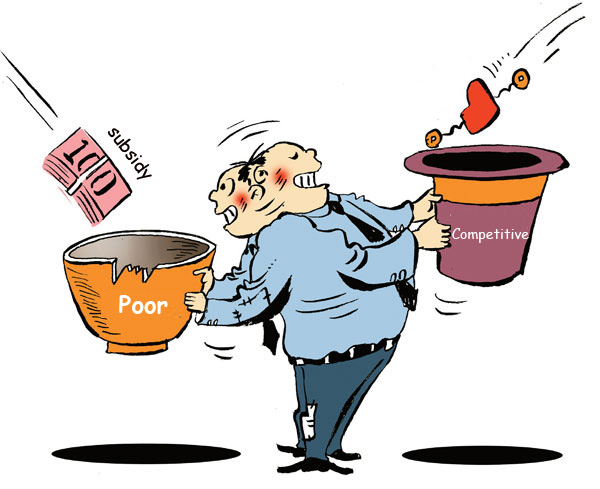(Ecns.cn)--On Octobor 17, a controversial list of the Top 100 Most Competitive Counties in China released by the Zhongjun Institute of County Economics stirred a heated discussion when it included 17 state-designated impoverished counties.
Though officials of the counties labeled as poor commented that the ranking was a joke, experts pointed out that it is not all that surprising. A decade after the government revised its poverty alleviation policies, many of the 592 most impoverished counties receiving the state's priority aid have witnessed rapid development and even shaken off poverty.
Labeled as needy
Wu Guobao, director of the Poverty and Development Finance Division at the Rural Development Institute of the Chinese Academy of Social Sciences, further explained that since 1986 China has implemented a scheme for providing subsidized loans to poor areas and defined standards for the key poverty-stricken counties to be aided.
In 1994, Wu added, the standards were readjusted to keep up with the country's economic development, after which, 592 counties in 27 provinces, autonomous regions, and municipalities were listed as the key poverty-stricken counties to be aided in the Seven-Year Priority Poverty Alleviation Program. These counties covered over 72% of the rural poor across the country.
The third readjustment happened in 2001, Wu continued, when the Chinese government officially issued the Outline for Poverty Alleviation and Development of China's Rural Areas (2001-2010), taking counties in coastal areas with developed economies off the list, and putting the stress on those in the central and western regions.
Enjoy being impoverished
"'Poverty-stricken county' is a confusing term," Wu noted. "The favorable policies are only applied to counties because the Chinese poverty alleviation strategy is basically a trickle-down regional economic development one, in which the income growth of poor households is expected to be achieved via regional economic development。"
"Some villages in non-impoverished counties are quite needy. Thus, the government gave favorable policies to entire counties with the aim of benefitting those in specific poor villages," he added.
As a result, the aid packages, while lifting those impoverished counties out of poverty, also provided them the chance to further their interests, only if they did not cast off their labels of being the poorest, pointed out Wu.
"Such a practice is quite understandable," said Wu, explaining that "the poverty-stricken counties listed can be subsidized. Currently, the annual financial allocation for poverty alleviation is over 20 billion yuan, and the discounted government loans could also hit 18 billion yuan."
"Some counties are indeed quite needy; while some are willing to be called poor in order to get the preferential policies and subsidies," analyzed Sun Jiuwen, director of the Institute of Regional Economics and Urban Management in the School of Economics at Renmin University.
"Theoretically, the limited funds should be allocated to the neediest regions. However, in reality, some county-level governments are reluctant to give up their subsidies," Sun added. He further noted that "currently there is no effective exit mechanism for those counties to erase their names from the state's priority poverty relief list."


















